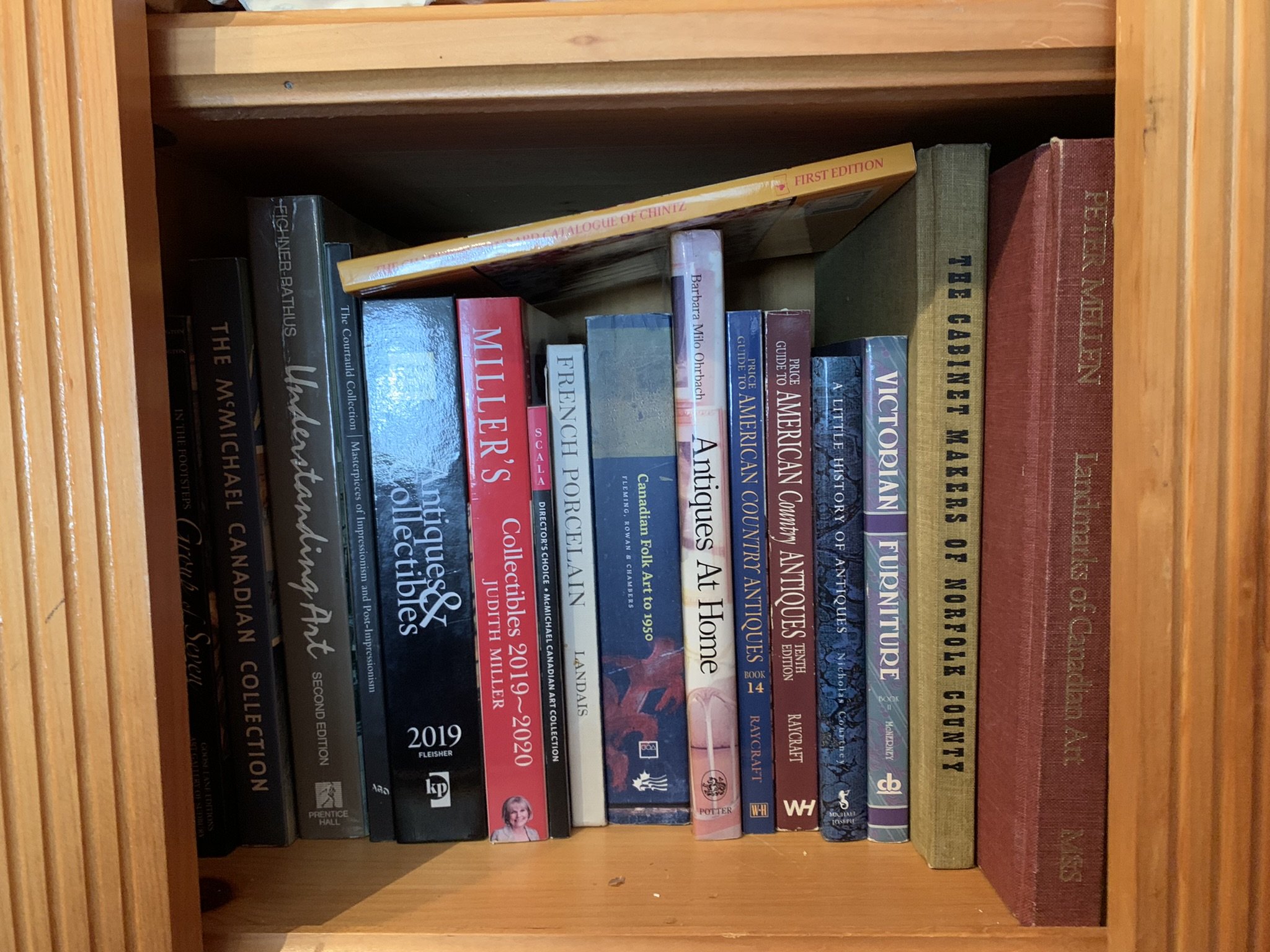Mea Culpa
The trials and tribulations of shopping for Myrtle’s
I’m about to give you a peak into the way in which one should and should not go antique treasure hunting. Mostly these will be cautionary tales because who doesn’t love a story about an epic fail?
First of all, let me just say I’m no expert on art appreciation or art history. I’ve got a Bachelor of Arts with a major in English and a minor in theatre. Then I did a Master’s degree in journalism. So I know how to research, how to analyze and I do love a good yarn.
But what I did learn at post-secondary education is how to learn. So, when it comes to art and depression glass, milk glass, antique furniture, folk art, anything that takes my fancy, I research it.
So here are a few additions to my bulging library:
I’ve also got a book somewhere called CanFake about fake art and antiques. This offers some great tips particularly for furniture that is not an authentic antique but a reproduction.
So here are a few of my sad ‘fake’ mistakes and the takeaways:
1) What happened? I was bidding on an online auction when I saw a beautiful painting, appearing to be watercolour by the well-known Glen Loates (www.glenloates.com) of chickadees on a pussy willow branch. It was labeled as an original piece of art. I checked with the auctioneer who confirmed but did not send any more evidence. As a result I paid likely double what I should have. I still love it – who doesn’t love Glen Loates, but it burns a bit. Quite honestly, I got carried away. It happens.
Lesson: When online shopping, look at every photo provided and if there aren’t enough or there is poor quality, ask for more pics. If possible, ask for in-person preview of the item. Or ask for evidence of signatures, print numbers etc.
2) What happened? I saw a post on Kijiji of two paintings by a well-known 20th century British painter who did travel to Canada and do some work here before returning to the U.K. I went to the home and the seller gave me a magnifying glass to examine the pieces. The frame and art were very dirty but appeared to be authentic works of oil on canvas. I promptly paid for them and took them home. Later that year (2020) I sent them along with some other works to be evaluated for cleaning by a professional art conservator in London, ON. When she sent her assessment and we discussed it, I discovered they were prints – not originals as sold. I do not think the seller meant to hide the fact they were originals because as the conservator suggested, the method in which these prints were made and their condition was of the highest quality. The artwork is actually a colour halftone reproduction on textured paper mounted on canvas. Both pieces were then stretched and mounted. The conservator said she’d seen reproductions of this artist before and these were of very high quality. But still it smarted.
Lesson: Before spending more money that you’re willing to lose, have a proper appraisal of pieces of art, particularly those which are dirty and may hide evidence of the item being a reproduction or other flaws.
3) What happened: I was trolling through an online auction and came across a lot of glassware – I picked it up for a decent price – I was drawn to the auction for some antique Belleek china (www.belleek.com) , a weakness of mine. This is how I discovered beautiful Tarentum pressed glass. In another search for Belleek (I likely need an intervention), I found four Skye McGhie porcelain pieces which are just stunning. I’ve also found a stunning Coalport teacup that was in another box of so-so cups with an Aynsley cup highlighted, not the pretty blue and white number tucked away. See, sometimes mistakes can be good.
Lesson: For glass or ceramics, compare prices on Etsy, eBay, Chairish, 1stDibs (super fun site to visit) and others to check out more information. Be aware though – sometimes these prices can also be inflated. COMPARE!!!
There are also innumerable sources on the web such as museums dedicated to specific topics such as glass, ceramics, etc. Many of these are also museums with excellent virtual exhibits (The Museum of American Glass in West Virginia - http://www.magwv.com/index.html; The Gardiner Museum in Toronto www.gardinermuseum.ca; The Museum of Ceramics - https://www.themuseumofceramics.com).
The more you learn about these items, the more fun you’ll have when you ‘discover’ a new collectible.

